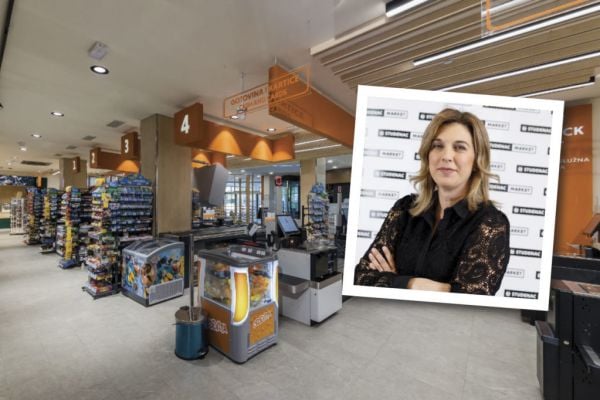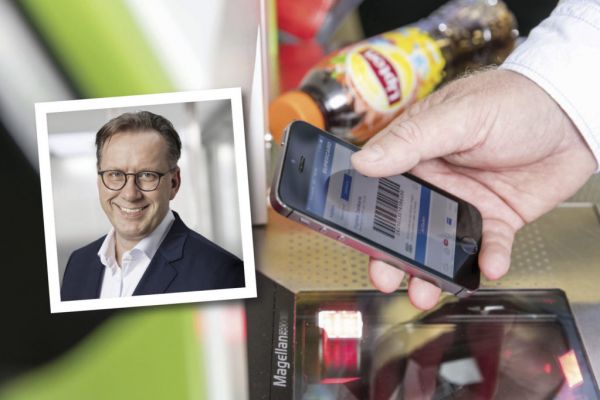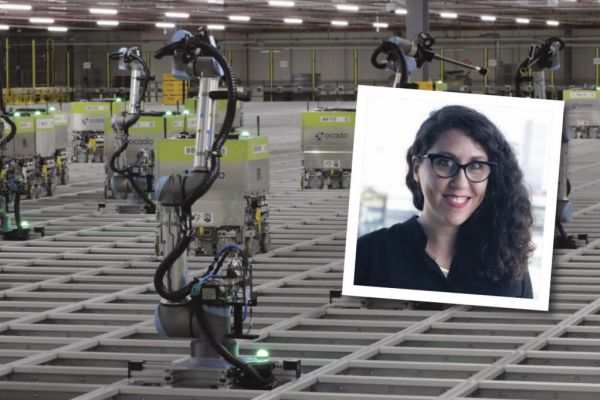While Store Brand packaging in the main tends to adhere to certain ground rules, new food startups are leading to greater experimentation. Ahead of this year's PLMA World of Private Label trade show, ESM chats to packaging consultant Loe Limpens of Yellow Dress Retail. This article first appeared in ESM Issue 3 2019.
While product packaging started out as a means to ensure product quality, since the emergence of mainstream brands in the early part of the last century, packaging developed an entirely new function – to attract shopper attention and tempt them to make a purchase.
As Loe Limpens, private-label consultant and managing partner of Yellow Dress Retail, explained in the book The Private Label Revolution, packaging design has developed into a specialist industry, creating what is dubbed in the industry the ‘silent salesman’: attractive, differentiating packaging design. When it comes to private-label packaging design, until recently the main goal of said packaging was to reflect a particular pricing ‘tier’, and/or position a product in keeping with the language of a particular category.
Now, however, private label is being seen as a differentiator by retailers, Limpens explains, and the design should both reflect the retailer’s identity as well as the rapidly-changing needs of the shopper.
“Private-label packaging design has a shorter life cycle nowadays,” Limpens tells ESM. “The society we live in is much more visual-driven than it was in the past. We see as many images in half a day as someone living in the Middle Ages would have seen in their entire life. With that in mind, it’s really important to make people notice you; when something is a few weeks, or even a few days old, they are bored with it, and won’t look at it any more.”
Changing Role
In the early days of private label, in the 1970s, generic labels in plain white, no-frills packaging were adopted by retailers, with the aim of keeping the price as low as possible. Retailers had little knowledge of packaging design – this was the responsibility of brand owners, after all – and the product itself was generally of lower quality than the brand equivalent. Therefore, basic packaging was perfectly suited for a basic product.
While this hampered the rapid development of private labels, the emergence of ‘good-better-best’ architectures in the early 2000s ushered in a new era for private label, and for private-label packaging.
For example, the packaging design of the standard, or better, private-label range, was used to communicate the message that the product was of the ‘same quality as the leading brand, but at a lower price’. Similarly, the value, or ‘good’ tier, could communicate its value-for-money credentials.
As Limpens explains, a well-developed private-label architecture with multiple tiers helps to support retailers in balancing the price and quality perception of consumers. Each tier, in turn, has traditionally used a grid, which contains fixed elements that are in keeping with the role of the private label both within its category and throughout the store. Generally, there is a connection between the number of SKUs in a particular private-label tier, and the number of fixed components that need to be laid down in a grid. If a range has few SKUs, the grid elements are more prominent. If the range has a lot of SKUs, a looser grid can be used.
But this is changing. As a result of globalisation, more well-travelled consumers, and social media, retailers are being more experimental with their private-label structures.
“When I started in the industry, the life cycle for private-label design was seven or eight years. Nowadays, it’s two years, or even less in many cases,” Limpens explains. “You need to stay relevant to your customer, and as such you need to change your visual identity very often.”
In many cases, these changes are being driven, either directly or indirectly, by startup brands, which are bringing a sense of urgency to the grocery space; something retailer private labels need to respond to.
“Start-up brands are using a new visual language, and while previously, you might have designed in keeping with the language of the ‘category’, they really want to create a different proposition,” Limpens adds. “In turn, that influences the wider language of the category.”
Keeping Ahead Of Trends
In The Private Label Revolution, Limpens cites the example of Coop Switzerland, which boasts a private-label market share that is one of the highest in Europe, at 50%. Coop Switerland’s packaging design department processes around 6,500 SKUs per year, with an average project duration of six to nine weeks, depending on the packaging concept. With new private-label brands, this process can take up to a year.
Coop is also home to one of the most highly-regarded brands in the Swiss market, Naturaplan, which has been around for more than 20 years, and helped kickstart the organic food movement in Switzerland.
While this loyalty remains unchanged, Coop has also realised that the standards expected today may be different to those of two decades ago, prompting it to launch Karma, a vegan special interest brand located between the mid- and premium tiers.
“Karma is a new startup brand that is positioned more in keeping with what organic stands for these days,” says Limpens. “Coop has also developed stores that only serve Karma products.”
In addition, Coop has also gone one step further, with the development of its Betty Bossi division, which was borne out of the retailer’s takeover of a cookbook publisher back in 2001, and originally dates back to the 1950s.
Now, Betty Bossi operates as a centre for product development and international food trend watching.
“Coop uses it to develop and test new concepts, such as the new Fooby store,” says Limpens. “This was the visualisation of its Fooby internet arm, through which it has engaged with its customers and developed a more personal service.”
Professional Outlook
According to Limpens, retailers now see increased professionalisation as a prerequisite for further growth in private label – store brands need to commit to innovation and continuous new product development on a par with, or in many cases exceeding, that of mainstream brands.
Retailers see private-label packaging as an investment rather than a cost, and bring on board brand specialists to strategise that retailer’s next move, or how best to capitalise on an emerging trend. This in turn leads to a rethink of the traditional private-label architecture and the emergence of a more fluid approach to design.
In addition, this can also give private-label manufacturers an advantage over major brands, which are perhaps not as adept at seizing the ‘now’.
“If you are a national brand, it can take up to two years to launch a new product and bring it to market, and by that time, the concept you are hoping to tap into could be outdated,” says Limpens.
“For major organisations, it’s getting more and more challenging to be up to date, and that’s why you have so many large companies investing in small startups in order to get this innovation back in house. Private label has a real advantage in terms of getting products to market, fast.”
© 2020 European Supermarket Magazine – your source for the latest retail news. Article by Stephen Wynne-Jones. Click subscribe to sign up to ESM: European Supermarket Magazine.














